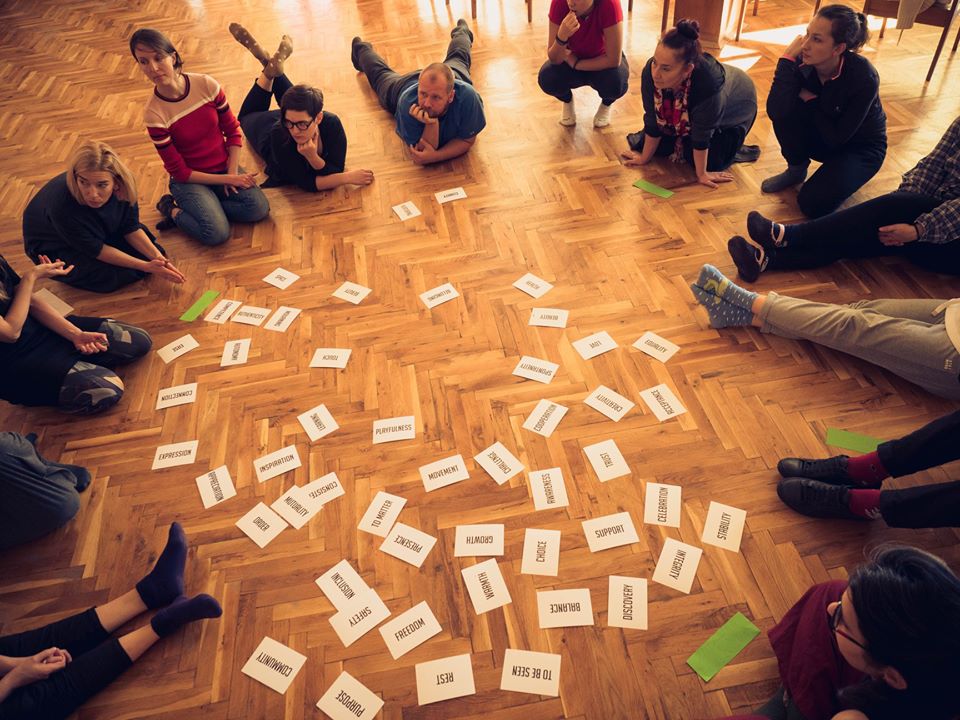
by Ilze Zirina. Photo by Kamila Neuman.
- Movement is a good starting point get to know each other and understand the character of the project even if it is just management meeting. Having very different professional, cultural and personal backgrounds our group found connection through movement session immedeately. Already the second session was Meeting in Movement 1 with local young people. As we all were new to each other we were on the same page quite soon. We all have similar insecurities and wishes: we enjoy trust but it is also challenge; we want to be accepted and we are afraid to open ourselves; we want to be heard and we need to learn listening; and it is very difficult to see the project just from descriptions. So, our schedule was structured so that first we experience things, have some time to reflect about them and then analyzed and disscussed about them.
- Administrative people are very wellcome to be a part of practical action of the project. This is beneficial from several aspects: witnessing the practical actions they understand better the essence of the project and feel more involved in it rather than just being a part of the paperwork; during the debriefing they open another perspective of things widening the diversity of the opinions and make practitioneers think out of the box; they can contribute with their knowledge and skills solving management and administrative questions; not feeling to move they can do documentation ( photo, video) while witnessing practical research process.
- Having transnational meeting at the actual working space of the host allows participants to empathize to the partner and it’s work. Building the long term partnershipit is crucial to be in partners shoes even if for a short time. To feel the infrastructure, to meet the young people, to see the everyday working process, to see the town with the eyes of the partner, to create things together. For me it was a big force and inspiration and feeling myself as a part of the group. This experience was deffinetly stronger than having partner meeting in a nice conference space somewhere in mountains with a nice view and SPA in the evenings.
- Diversity is a value. When we practiced to collaborate within the national teams – youth workers and movers, we found out that it is very exciting to search for common guideline, involving all the different ideas at the process. It is challenging enough but also not too confusing. I believe that it was right to put main focus to cooperation within the national team and time to time to meet in transnational scale to share the process, opinions and thoughts. We bring real contribution to our communities but also learn to cooperate, coming out of our comfort zone.
- Cooperation in a distance does not work. All the participants of the project are busy experts who often have several groups and projects to work with. Which means that the intensive and full focus towards the Key to Connection can happen during our transnational meetings and during times when we actually meet within our national teams. I assume when the activities with local communities will start then also the process will drag us in the theme more intensively. And then more and more values to share will appear.
the Key to Connection is implemeneted in the framework of Erasmus+: Youth in Action programme – key action 2, Strategic Partnership for exchange experiences.

